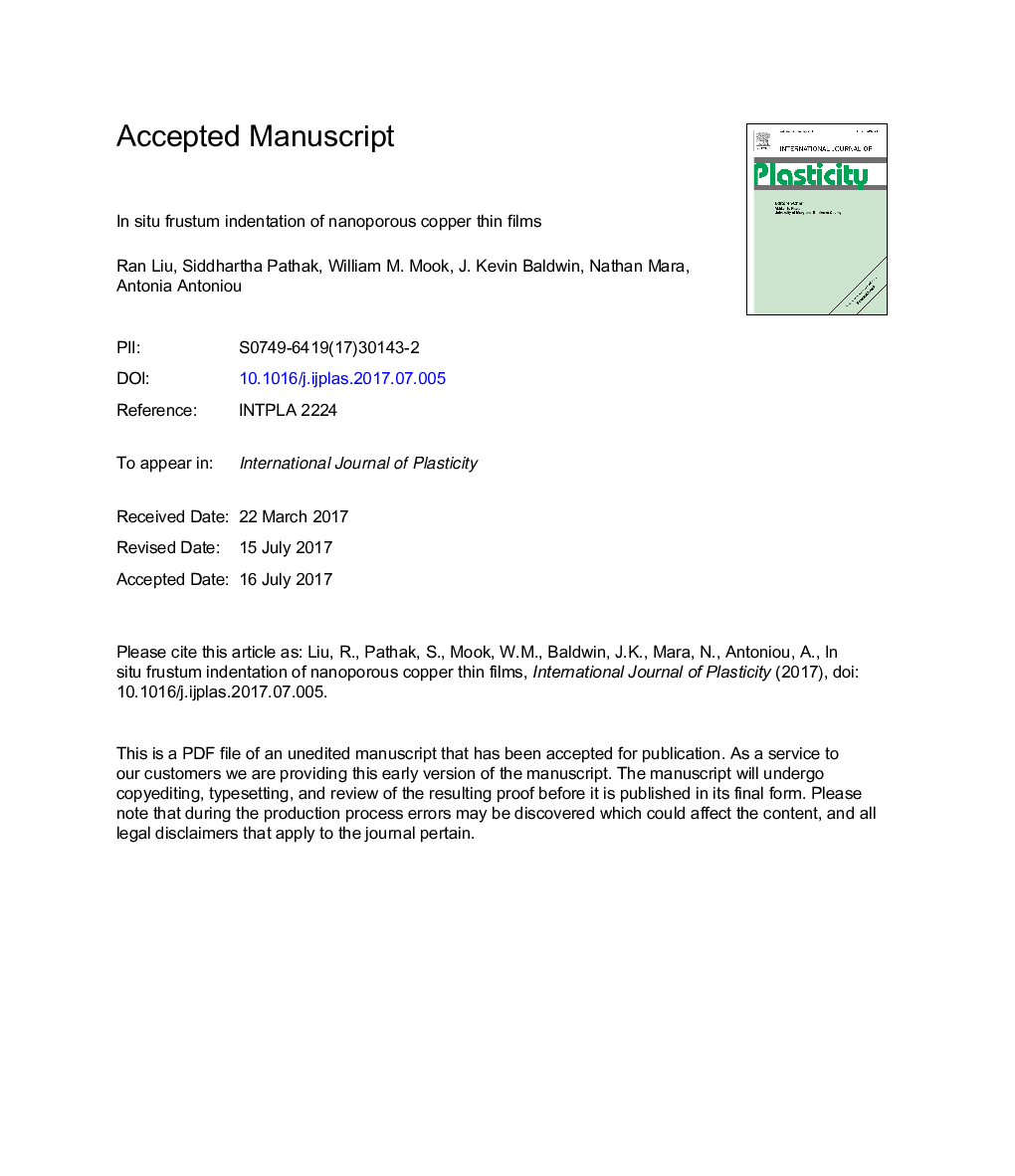| کد مقاله | کد نشریه | سال انتشار | مقاله انگلیسی | نسخه تمام متن |
|---|---|---|---|---|
| 5016672 | 1465575 | 2017 | 36 صفحه PDF | دانلود رایگان |
عنوان انگلیسی مقاله ISI
In situ frustum indentation of nanoporous copper thin films
ترجمه فارسی عنوان
درون حفره ناپیوسته نازک مس نازک مس
دانلود مقاله + سفارش ترجمه
دانلود مقاله ISI انگلیسی
رایگان برای ایرانیان
کلمات کلیدی
پدیده های فیزیکی: شرایط تولید، شرح مشکل: رفتار سازنده، شرح مشکل: مواد متخلخل، روش ها: عناصر محدود، روش ها: تست مکانیکی، روش ها: میکروسکوپ الکترونی،
موضوعات مرتبط
مهندسی و علوم پایه
سایر رشته های مهندسی
مهندسی مکانیک
چکیده انگلیسی
Mechanical properties of thin films are often obtained solely from nanoindentation. At the same time, such measurements are characterized by a substantial amount of uncertainty, especially when mean pressure or hardness are used to infer uniaxial yield stress. In this work we demonstrate that indentation with a pyramidal flat tip (frustum) indenter near the free edge of a sample can provide a significantly better estimate of the uniaxial yield strength compared to frequently used Berkovich indenter. This is first demonstrated using a numerical model for a material with an isotropic pressure sensitive yield criterion. Numerical simulations confirm that the indenter geometry provides a clear distinction of the mean pressure at which a material transitions to inelastic behavior. The mean critical pressure is highly dependent on the plastic Poisson ratio νp so that at the 1% offset of normalized indent depth, the critical pressure pmc normalized to the uniaxial yield strength Ï0 is 1 < pmc/Ï0 < 1.3 for materials with 0<νp<0.5. Choice of a frustum over Berkovich indenter reduces uncertainty in hardness by a factor of 3. These results are used to interpret frustum indentation experiments on nanoporous (NP) Copper with struts of typical diameter of 45 nm. An estimate of the yield strength of NP Copper is obtained 230 MPa < Ï0 < 300 MPa. Edge indentation further allows one to obtain in-plane strain maps near the critical pressure. Comparison of the experimentally obtained in-plane strain maps of NP Cu during deformation and the strain field for different plastic Poisson ratios suggest that this material has a plastic Poisson ratio of the order of 0.2-0.3. However, existing constitutive models may not adequately capture post-yield behavior of NP metals.
ناشر
Database: Elsevier - ScienceDirect (ساینس دایرکت)
Journal: International Journal of Plasticity - Volume 98, November 2017, Pages 139-155
Journal: International Journal of Plasticity - Volume 98, November 2017, Pages 139-155
نویسندگان
Ran Liu, Siddhartha Pathak, William M. Mook, J. Kevin Baldwin, Nathan Mara, Antonia Antoniou,
